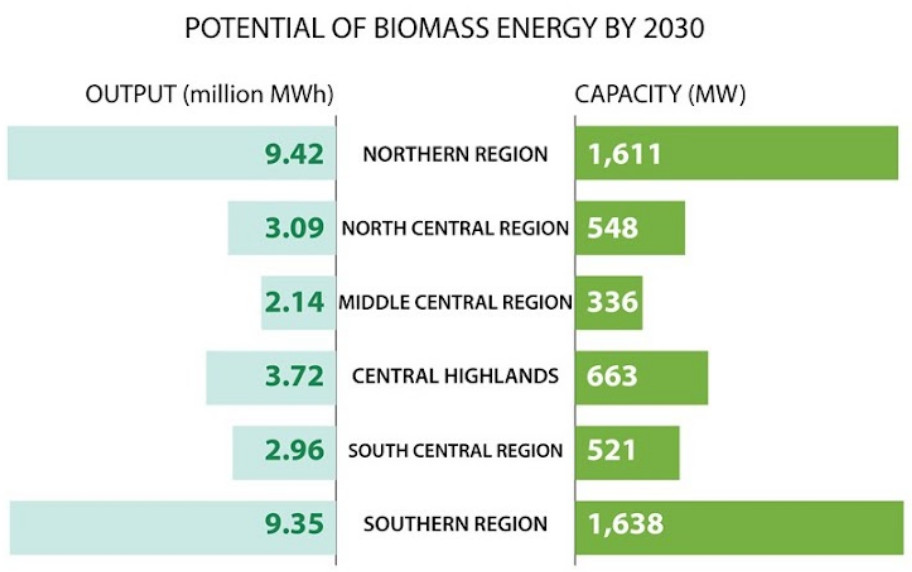Have you ever wondered, in sugar factories, where do they dispose of the sugarcane wastes afterwards? The answer is easy: Nowhere! Because sugarcane bagasse is a great source of organic material for biomass renewable energy.
How does Biomass work?
Biomass energy is energy generated or produced by living or once-living organisms. Early humans using wood, plants or animal dung to make fire were all creating biomass energy. The most common biomass materials used for energy are plants and wood. Biomass used and combusted for energy can come in a number of different forms, ranging from compressed wood pellets – which are used in power stations that have upgraded from coal – to biogas and biofuels, a liquid fuel that can be used to replace fossil fuels in transport. IT can be produced from different sources including agricultural or forestry residues, dedicated energy crops or waste products such as uneaten food.

Biomass has been used as a source of energy for as long as humans have been creating fire. Today biomass in the form of wood and wood products remains a widely used energy source for many countries around the world – both for domestic consumption and at grid scale through power stations, where it’s often used to replace fossil fuels with much higher lifecycle carbon emissions.
Let’s take a look at the following chart to get more understanding of the biomass process.

Biomass in Vietnam
According to data from the Ministry of Industry and Trade, energy demand in Vietnam is now growing at twice the rate of GDP growth. Meanwhile, in developed countries, this ratio is only approximately 1. Vietnam’s energy consumption is increasing and has increased more than 4 times from 2005 to 2030, electricity consumption has increased by nearly 400% within 10 years from 1998 to 2008.
PDP 7 has set targets for biomass power development in the periods to 2020, 2025 and 2030, respectively. 660 MW, 1,200 MW and 3,000 MW.

According to research made by VietnamPlus in 2021, Northern and Southern regions of Vietnam currently hold the highest potential for biomass development. Moreover, the government now still has a supportive policy towards biomass.
FiT for on-grid biomass power projects:
- Combined heat and power (“CHP“) biomass power projects: 7.03 US cent/kWh
- Other biomass energy projects: 8.47 US cent/kWh
In 2018, there were 38 sugarcane mills in Vietnam that use biomass to produce electricity and heat with a total capacity of about 352 MW. 4 power plants are grid-connected with a total capacity of 82.51 MW (22.4%), selling 15% of the electricity generated from biomass to the grid.
With a thriving agriculture market, biomass energy can come from many sources of materials such as bagasse, wood chips, rice husks and rice straw. Taking advantage of the great potential of biomass energy in Vietnam will not only help reduce Vietnam’s dependence on traditional energy sources, reduce carbon emissions and environmental pollution but also bring economic benefits to farmers participating in the bioenergy value chain.

